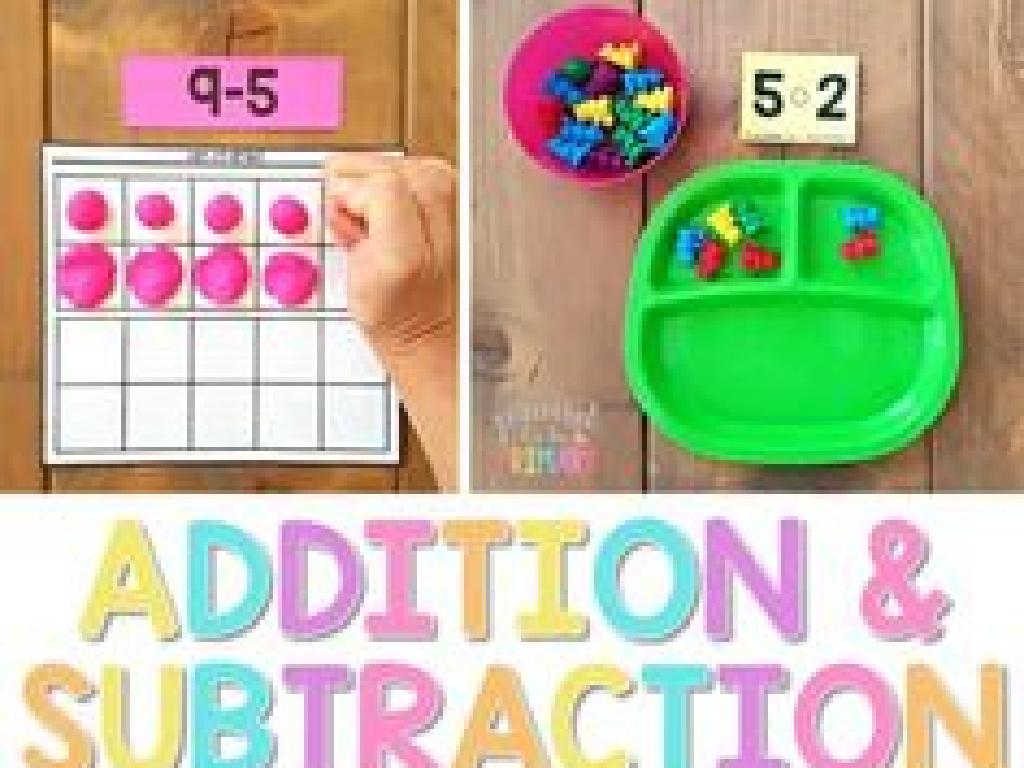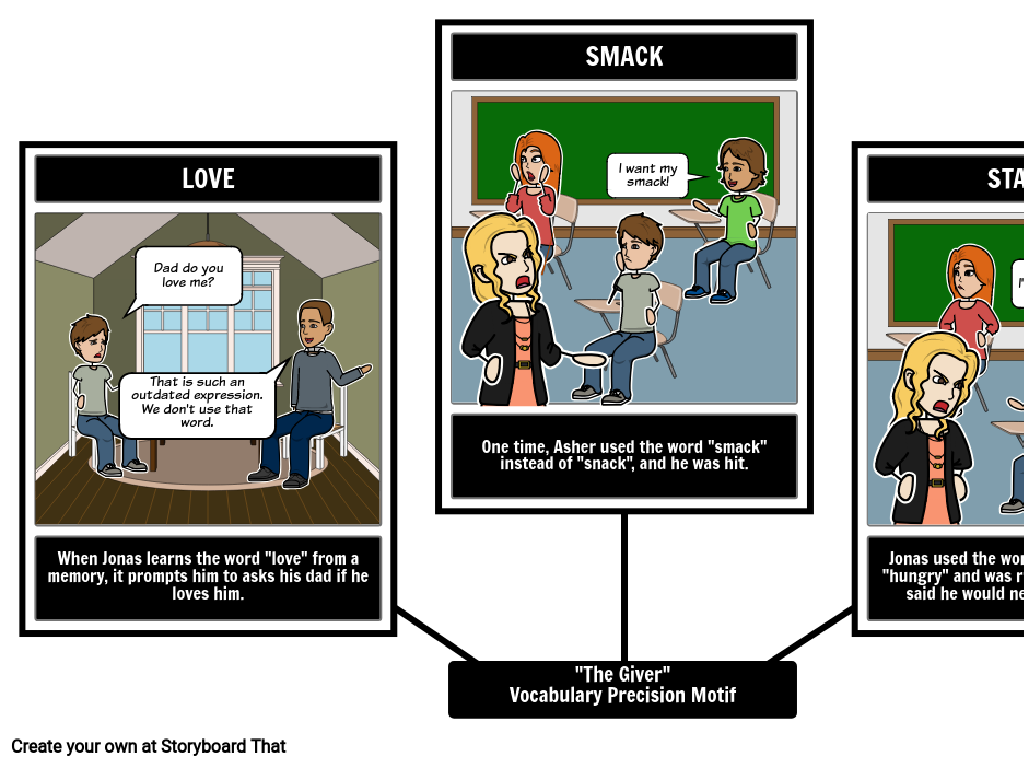Use Compensation To Add - Up To Two Digits
Subject: Math
Grade: Second grade
Topic: Addition Strategies: Two Digits
Please LOG IN to download the presentation. Access is available to registered users only.
View More Content
Welcome to Addition Strategies!
– Learn a cool way to add numbers
– Introduction to ‘compensation’
– Compensation means adjusting numbers to make them easier to add
– Simplify addition with compensation
– Example: 29 + 3, think of 29 as 30, then add 3 to get 33
– Get ready to be addition experts
|
Today’s lesson introduces the concept of compensation, a useful strategy for adding two-digit numbers. Compensation involves adjusting one of the numbers to a round figure to make the addition easier, then correcting for the adjustment at the end. For example, when adding 29 and 3, we can adjust 29 up to 30 (a round number), add 3 to get 33, and since we added 1 extra, we know the answer is 32. This method simplifies mental math and helps students add quickly and efficiently. Encourage the students to practice this strategy with various numbers and to share their methods with the class. This will help them understand the concept of compensation and how it can be applied to different addition problems.
Understanding Compensation in Addition
– What is compensation?
– It’s adjusting numbers to simplify addition.
– Making numbers easier to add
– Like rounding numbers to add, then fixing the sum.
– Trading for simpler numbers
– We can adjust one number up and the other down.
– Keeping total value the same
– The sum doesn’t change, just the way we get there.
|
Compensation is a useful strategy for adding two-digit numbers by making them easier to work with. Explain to students that compensation is like making a trade; for example, if we have 29 + 3, we can ‘trade’ 1 from the 3 to make 29 into 30, which is easier to add. We then add the remaining 2 to get 32. Emphasize that the total sum remains the same even though we adjust the numbers. Use visual aids to show this process step by step, and provide several examples with different numbers. Encourage students to practice this strategy with hands-on activities and to explain their thought process as they use compensation to add.
Why Use Compensation in Addition?
– Simplifies addition
– Makes adding quicker and less complex
– Mental math strategy
– Add without paper, using mental calculations
– Checks for accuracy
– Verify answers and catch errors
– Builds number sense
– Understand numbers and their relationships better
|
Compensation is a useful technique in addition, especially for second graders who are learning to add two-digit numbers. It allows students to adjust numbers to make them easier to work with mentally. For example, if adding 29 + 15, one might round 29 up to 30, add it to 15 to get 45, and then subtract the 1 that was added. This method not only speeds up the process but also reinforces mental math skills, which are crucial for mathematical proficiency. Additionally, it serves as a method for double-checking work, as students can use it to verify their answers obtained through other methods. Encourage students to practice this strategy with different sets of numbers to build their confidence and understanding of the concept.
Making Addition Easier with Compensation
– Understanding compensation
– Example: 29 + 3 is hard
– Adding 9 and 3 can be tricky
– Adjust 29 to 30 for ease
– We borrow 1 from 3 to turn 29 into 30
– Final easy addition: 30 + 2
– Now, it’s simpler: 30 + 2 equals 32!
|
This slide introduces the concept of compensation in addition, which is a strategy to simplify calculations. Start by explaining that compensation involves adjusting numbers to make them easier to work with. Use the example provided to show how 29 can be rounded up to 30 to make addition with 3 easier. Emphasize that when we adjust one number, we must also adjust the other to keep the total the same. Practice this strategy with the students using similar examples and ensure they understand the concept of trading between numbers to simplify addition. Encourage them to try this method with different numbers and share their results.
Let’s Practice Compensation!
– Start with 47 + 5
– Round 47 to 50
– 47 is close to 50, which is easier to add
– Adjust the 5 accordingly
– Subtract 3 from 5 to compensate for rounding up
– Add 50 and 2 for the sum
– 50 + 2 is simpler than 47 + 5, and both equal 52
|
This slide is a class activity designed to teach students the concept of compensation in addition. Start by presenting the problem 47 + 5. Guide the students to see that rounding 47 up to 50 makes it easier to add. Explain that since we added 3 to 47 to make it 50, we need to subtract 3 from 5. This leaves us with an easier problem: 50 + 2. The answer is 52, which is the same as the original problem. Encourage students to practice this strategy with different numbers and to share their thought process with the class. This activity helps students to become more flexible with numbers and to develop mental math skills.
Your Turn to Try: Compensation Addition
– Pair up for practice
– Make numbers round for easy adding
– If you have 29 + 15, think of 29 as 30 by adding 1
– Work together to find easy sums
– Help each other with strategies
– Share tips on making numbers easier to add
|
This slide is designed to engage students in a hands-on activity to practice the compensation strategy for addition. Students should pair up and use the compensation method, which involves adjusting one number to a round number to simplify the addition process. For example, if the problem is 29 + 15, students can adjust 29 to 30 by adding 1, making the new problem 30 + 15, which is easier to add. Encourage students to communicate and collaborate to find the simplest way to add two-digit numbers. Provide guidance and ensure that each pair has a chance to try different problems. Offer praise for teamwork and successful use of the strategy. Possible activities include: trading problems with another pair, using manipulatives to visualize the compensation, and creating their own two-digit addition problems to solve using compensation.
Class Activity: Compensation Challenge
– Understand ‘Compensation Challenge’
– Receive a set of addition problems
– Use compensation to solve them
– Adjust numbers to make them round, then solve & re-adjust
– Aim to become Compensation Champions!
|
This activity is designed to help students practice the compensation strategy in addition. The game will involve students receiving a set of two-digit addition problems. They will use compensation to make one of the numbers a multiple of 10, making it easier to add, and then adjust back to find the correct answer. For example, for 29 + 15, they might adjust 29 to 30, add to get 45, and then subtract 1 to compensate, getting the correct answer of 44. The first pair to correctly solve all their problems will be named the Compensation Champions. This encourages teamwork and provides a fun and competitive way to practice math skills. Prepare four to five different sets of problems to ensure that each pair has a unique set, preventing copying and encouraging genuine problem-solving.
Conclusion: Mastering Compensation in Addition
– Celebrate learning compensation
– Compensation simplifies addition
– It’s like making a fair trade to add numbers more easily
– Practice makes perfect
– Keep trying with different numbers
– Aim to become addition experts
|
Well done on completing today’s lesson on using compensation to add two-digit numbers! It’s important to reinforce the concept that compensation is a strategy to make mental addition easier by creating ‘friendlier’ numbers. Encourage the students to continue practicing this method with a variety of numbers to build their confidence and speed. Remind them that with consistent practice, they will become proficient at addition. As a teacher, consider sending home additional practice worksheets and offering small group sessions for students who may need extra help.






